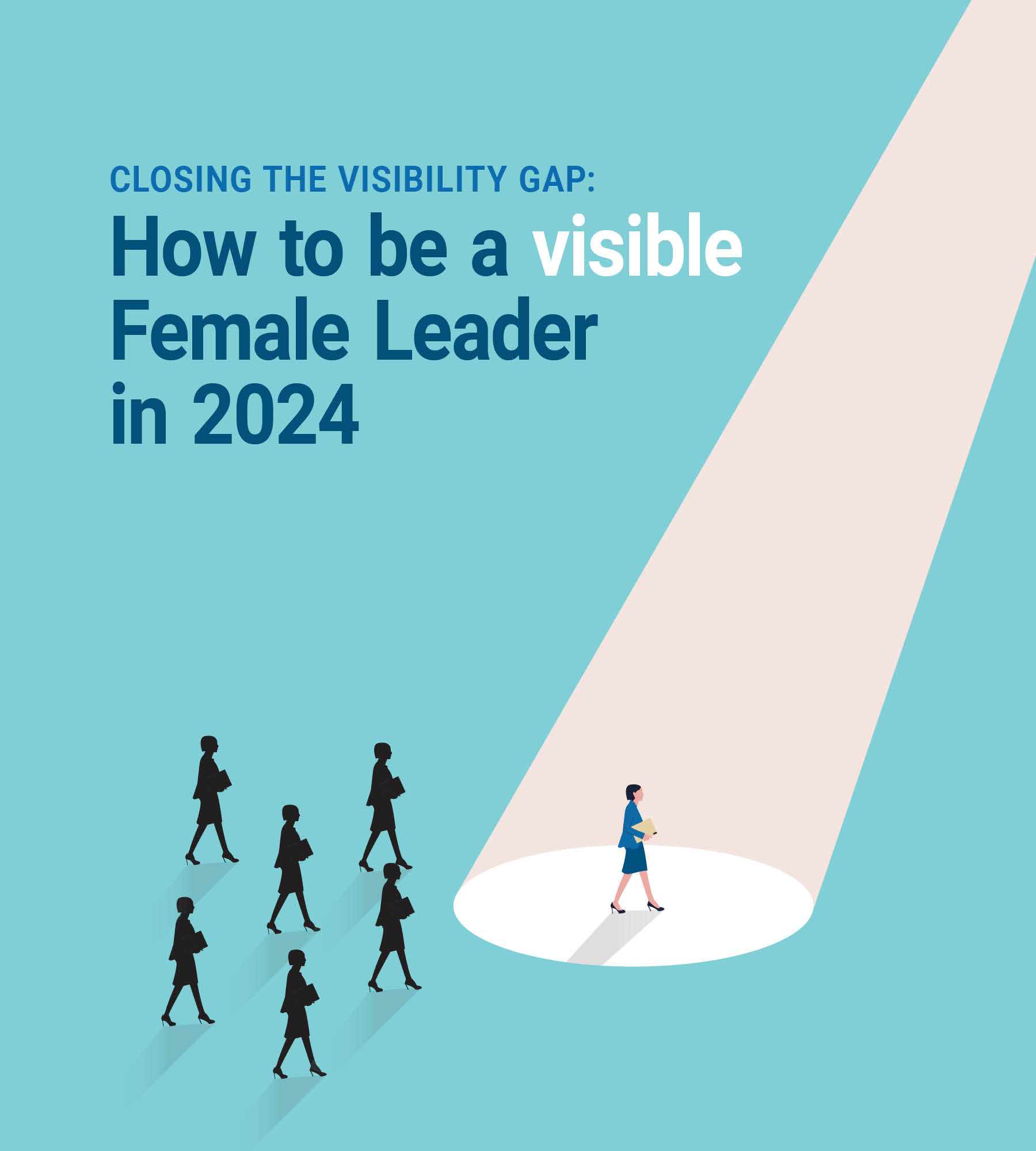Language
You can read the magazine in one of the following languages
A leader’s visibility plays a crucial role in their ability to lead. According to the World Economic Forum, visible leaders build higher trust with the people they lead but also lead with greater impact and influence.
They enhance the value of their company’s brand, build trust with prospective talent and stakeholders, and protect their company’s reputation during an issue or a crisis because of the authority they have already established.
So why, in 2024, are male leaders still more visible than female leaders? The key reason is numbers and female under-representation in the C-suite.

Work is being done to close this gap for women, but even when we ignore the numbers, male leaders remain more visible than their female counterparts.
In Australia, only 26 ASX300 companies have a female CEO. That’s less than 10 percent, although this figure is up from 18 in 2022. Work is being done to close this gap for women, but even when we ignore the numbers, male leaders remain more visible than their female counterparts.
The reasons for women leaders being less visible than male leaders are multiple, but here are a few.
Women face unconscious bias and are stereotyped in ways that undermine their visibility and authority. The overwhelming representation of male CEOs means there are fewer female role models for women leaders to follow, and many women juggle dual roles as professionals and caregivers that men don’t.
A visible leader is seen as open and transparent, building trust with the people they lead, their industry and stakeholders. A visible leader who shares their vision for their company and how they lead builds influence and inspiration with their audiences.
A visible leader is a valuable asset for their company, attracting talent, setting the tone for the company’s culture, building trust with investors and managing the media effectively, to name a few benefits.

Visibility builds trust, which means relationships with staff, stakeholders, partners and industry will be easier and more productive.
On an individual level, there are multiple benefits to being a visible CEO. Their leadership will be easier because they are proactive and transparent about their goals for the business and how they will get there.
Visibility builds trust, which means relationships with staff, stakeholders, partners and industry will be easier and more productive. Plus, a CEO’s reputation is a tangible asset they take with them for the duration of their career, bringing new opportunities to the business they lead today, as well as what they choose to do in the future.
Many CEOs I’ve worked with find that visibility breeds visibility, so small steps toward being visible have greater impact than the effort they require.
Leverage social media: A female leader’s social media, mainly LinkedIn in this case, is a publishing platform for women to share how they’re leading, company updates and future plans.
It should be prioritized as highly as building a media profile because a leader can control what they post and when, build an engaged audience, amplify their company’s social communications and establish a profile as a thought leader, if that’s a goal.
Company communications that support female leadership visibility: The more that a female-led company communicates the achievements of its CEO, her vision for the company and how she leads, the more we see:
• female leadership as the norm;
• female leadership role modeled for other women and future female leaders;
• female leadership become about the achievements that the leader delivered for their people and their business.
Companies with a female CEO have an obligation to spotlight their CEO and help close the visibility gap between male and female leaders.
My recommendation is that companies with a female CEO over-index on their communications about their CEO to build awareness that the company has a female CEO, show how she leads, her achievements and make her a role model for others to follow.
Messaging: Unspoken bias has existed for too long regarding how women leaders are represented compared to men. Male leaders will receive a focus on their achievements, leadership vision and company results, while female leaders have historically been communicated with a focus on their gender.
The more unspoken bias we remove from messaging around women in leadership roles, the more we establish male and female leaders on the same level.
Addressing media bias: More work can be done by the media to balance female CEOs’ voices in the media with male voices.
A female CEO’s role in this area is to be available to talk to the media to build an enduring and trusted profile there (get training talking to the media, if this still makes you nervous), while the media can seek out more women leaders to profile and interview for stories.
But editorial media has more work to do to give female CEOs the same narrative emphasis that they do their male counterparts. The longer the media relies on justifications like ‘there are more male CEOs to interview’, the more they perpetuate the idea that leadership is for men.
Industry support: Industries, especially male-dominated industries, can play their role in spotlighting and celebrating the achievements of their female leaders.
Inviting them to speak at events and conferences, sharing their knowledge on panels, profiling them and featuring their opinions in industry publications are just some of the ways industries can help close the visibility gap for female leaders.
Each female leader and their support teams can contribute to closing the visibility gap.
While there is more work to be done, if every female leader can make their visibility part of their daily leadership role, and the stakeholders, media and teams around them can do their part to raise awareness of women in leadership roles, the faster this gap will close and more women will be leaders, and importantly, visible leaders.

Angela Cross
Contributor Collective Member
With more than two decades in corporate PR and crisis and issues management, Angela Cross has led reputation programs for multinational businesses, built thought leadership strategies for businesses and leaders, and been the driving force behind the successful creation of CEO and executive profiles. Today she applies the asset-based approach to reputation she utilized with her corporate clients to deliver results-focused, multi-platform reputation strategies for two types of clients: businesses that deserve recognition but don’t have it yet, and leaders who deserve a space as a thought leader and want to be visible with ease and purpose. For more information visit https://pilotpr.com.au/
